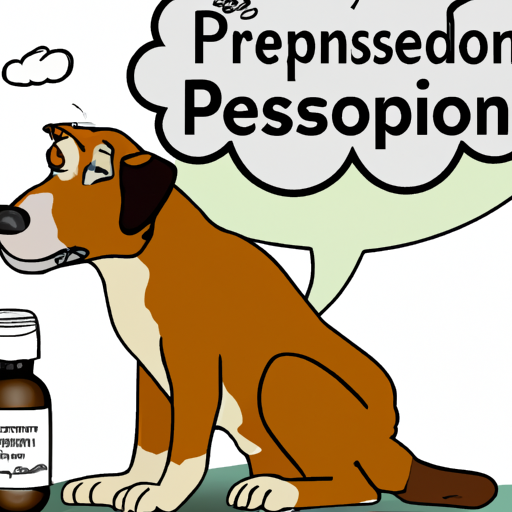Just as humans need medication to treat various ailments, our four-legged companions require the same attention. One common drug that veterinarians often prescribe for dogs is Prednisone. As a caregiver, it’s essential for you to understand the use of this drug, its benefits, side effects, and everything in between.
Table of Contents
- What is Prednisone?
- Uses of Prednisone in Dogs
- Side Effects of Prednisone
- Prednisone Dosage for Dogs
- Frequently Asked Questions
Key Takeaways
- Prednisone is a corticosteroid medication used to treat various conditions in dogs.
- While it can be highly effective, this drug also carries potential side effects.
- Always follow the prescribed dosage from the veterinarian to ensure the safety of your pet.
What is Prednisone?
Prednisone is a synthetic corticosteroid drug, often used to suppress the immune system and inflammation. It’s similar to a substance produced by your dog’s adrenal glands and is available only with a prescription. This drug is used in pets, including dogs, to treat a variety of conditions. One of the key benefits is its ability to reduce inflammation, a common issue in many health conditions (source).
Uses of Prednisone in Dogs
Prednisone is often used to treat conditions such as allergies, immune system disorders, and various types of inflammation. Here are a few examples:
- Allergies: Dogs with allergies may experience relief from prednisone. It can help reduce inflammation caused by allergic reactions.
- Arthritis: For dogs with arthritis, prednisone may alleviate inflammation and pain in the joints.
- Asthma: If your dog suffers from asthma, prednisone can help control flare-ups by reducing inflammation in the airways.
Additionally, Prednisone can also be used in the treatment of autoimmune diseases, certain types of cancer, and Addison’s disease. It’s vital to consult with a veterinarian to understand the potential benefits for your dog’s specific condition. You can read more about the various conditions that prednisone can treat at One Top Dog.
Side Effects of Prednisone
While prednisone can be highly effective in treating various conditions, it also has potential side effects. These may include increased thirst and urination, increased hunger, and behavior changes. Some dogs may experience more severe side effects such as gastric ulcers, pancreatitis, or liver dysfunction.
It’s important to monitor your dog closely while they are taking prednisone and report any unusual behaviors or symptoms to your vet. Check this article for more information about the side effects of Prednisone.
Prednisone Dosage for Dogs
The dosage of prednisone will vary depending on your dog’s condition and his overall health. A general guideline is to give 0.1 to 0.3 mg per pound of your dog’s weight. However, only a veterinarian can determine the exact dose for your pet.
It’s crucial to follow the prescribed dosage and not abruptly stop the medication as it could lead to prednisone withdrawal, which can be harmful. Your vet will provide instructions on how to safely reduce the dosage over time. You can find more information about the appropriate dosage in this guide.
Frequently Asked Questions
Q: Can I give my dog prednisone without consulting a vet?
A: No, prednisone is a prescription medication and should only be given under the direction of a veterinarian.
Q: What should I do if my dog misses a dose?
A: If your dog misses a dose, give it as soon as possible. If it’s close to the time for the next dose, skip the missed dose and return to the regular schedule. Do not double the dose.
Q: How long can my dog stay on prednisone?
A: The duration of treatment varies based on the condition being treated. Some conditions require short-term treatment, while others may need long-term treatment. Your vet will provide guidance based on your dog’s needs.
In conclusion, prednisone can be an incredibly helpful medication for dogs suffering from a variety of conditions. As a caregiver, your role is to ensure that your pet takes the medication as prescribed and to monitor for any side effects. Always work closely with your vet to ensure that your dog is getting the best possible care.



